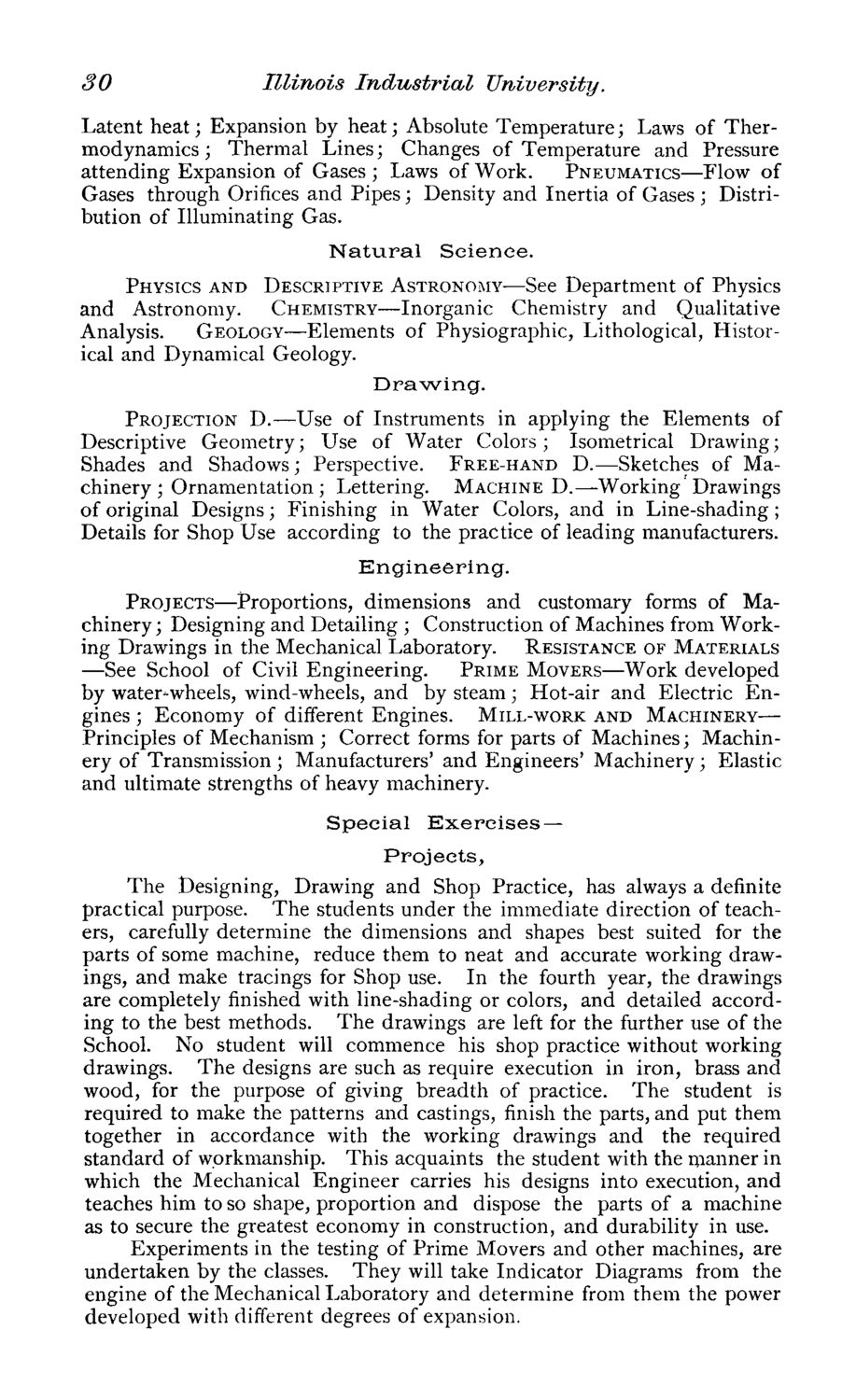| |
| |
Caption: Course Catalog - 1872-1873
This is a reduced-resolution page image for fast online browsing.

EXTRACTED TEXT FROM PAGE:
30 Illinois Industrial University. Latent heat; Expansion by heat; Absolute Temperature; Laws of Thermodynamics ; Thermal Lines; Changes of Temperature and Pressure attending Expansion of Gases ; Laws of Work. PNEUMATICS—Flow of Gases through Orifices and Pipes; Density and Inertia of Gases ; Distribution of Illuminating Gas. Natural Science. PHYSICS AND DESCRIPTIVE ASTRONOMY—See Department of Physics and Astronomy. CHEMISTRY—Inorganic Chemistry and Qualitative Analysis. GEOLOGY—Elements of Physiographic, Lithological, Historical and Dynamical Geology. Drawing. PROJECTION D.—Use of Instruments in applying the Elements of Descriptive Geometry; Use of Water Colors ; Isometrical Drawing; Shades and Shadows; Perspective. FREE-HAND D.—Sketches of Machinery ; Ornamentation ; Lettering. MACHINE D. —Working Drawings of original Designs; Finishing in Water Colors, and in Line-shading; Details for Shop Use according to the practice of leading manufacturers. Engineering. PROJECTS—Proportions, dimensions and customary forms of Machinery ; Designing and Detailing ; Construction of Machines from Working Drawings in the Mechanical Laboratory. RESISTANCE OF MATERIALS —See School of Civil Engineering. PRIME MOVERS—Work developed by water-wheels, wind-wheels, and by steam; Hot-air and Electric Engines ; Economy of different Engines. MILL-WORK AND MACHINERY— Principles of Mechanism ; Correct forms for parts of Machines; Machinery of Transmission ; Manufacturers' and Engineers' Machinery; Elastic and ultimate strengths of heavy machinery. Special Exercises — Projects, The Designing, Drawing and Shop Practice, has always a definite practical purpose. The students under the immediate direction of teachers, carefully determine the dimensions and shapes best suited for the parts of some machine, reduce them to neat and accurate working drawings, and make tracings for Shop use. In the fourth year, the drawings are completely finished with line-shading or colors, and detailed according to the best methods. The drawings are left for the further use of the School. No student will commence his shop practice without working drawings. The designs are such as require execution in iron, brass and wood, for the purpose of giving breadth of practice. The student is required to make the patterns and castings, finish the parts, and put them together in accordance with the working drawings and the required standard of workmanship. This acquaints the student with the rnanner in which the Mechanical Engineer carries his designs into execution, and teaches him to so shape, proportion and dispose the parts of a machine as to secure the greatest economy in construction, and durability in use. Experiments in the testing of Prime Movers and other machines, are undertaken by the classes. They will take Indicator Diagrams from the engine of the Mechanical Laboratory and determine from them the power developed with different degrees of expansion.
| |